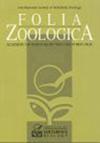Comparative distribution of Syrian and great spotted woodpeckers in different landscapes of Poland
Q2 Agricultural and Biological Sciences
引用次数: 13
Abstract
Abstract. Species often express some differences in habitat choice which enable their co-occurrence in sympatry and this phenomenon is particularly noticeable for related taxa and during range shifts. Here, co-distribution of two sibling woodpeckers (Syrian woodpecker Dendrocopos syriacus and great spotted woodpecker Dendrocopos major) in different types of urban, rural and riparian landscapes of Poland is presented. The Syrian woodpecker reached high densities in urban (city) landscape, but it was less common in town, rural and riparian areas, and everywhere it mostly occupied orchards and poplar and willow hedges. In contrast, the great spotted woodpecker was the dominant species in most areas, except city and everywhere was associated with forests or larger wooded areas (like parks). The Syrian woodpecker was dependent on the presence of softwood trees (poplars, willows), but it needed generally less than 40 % of wooded area in its territories, whereas the second species needed more than 70 %. The data presented here, together with information available from other areas in Central Europe, suggest that protection of Syrian woodpecker (species annexed in the European Union Bird Directive) should not be restricted to only rural landscapes but also needs to include its urban populations. Protection of this species should be focused on preservation of softwood tree hedges and woodlots and traditional orchards.叙利亚啄木鸟和大斑点啄木鸟在波兰不同景观中的比较分布
摘要物种在栖息地选择上往往表现出一定的差异,从而使它们能够在同属植物中共存,这种现象在相关分类群和范围转移中尤为明显。本文介绍了两种兄弟啄木鸟(叙利亚啄木鸟Dendrocopos syriacus和大斑点啄木鸟Dendrocopos major)在波兰不同类型的城市、农村和河岸景观中的共同分布。叙利亚啄木鸟在城市(城市)景观中密度很高,但在城镇、农村和河岸地区不太常见,到处都是果园和杨树和柳树树篱。相比之下,大斑点啄木鸟是大多数地区的优势物种,除了城市和任何地方都与森林或较大的树木地区(如公园)有关。叙利亚啄木鸟依赖于软木树木(杨树,柳树)的存在,但它通常需要不到其领土内40%的树木面积,而第二种需要超过70%。本文提供的数据以及中欧其他地区提供的信息表明,对叙利亚啄木鸟(欧盟鸟类指令所附的物种)的保护不应仅限于农村景观,还需要包括城市种群。对这一物种的保护应侧重于保存软木树篱、林地和传统果园。
本文章由计算机程序翻译,如有差异,请以英文原文为准。
求助全文
约1分钟内获得全文
求助全文
来源期刊

Folia Zoologica
生物-动物学
CiteScore
1.70
自引率
0.00%
发文量
0
审稿时长
3 months
期刊介绍:
Information not localized
 求助内容:
求助内容: 应助结果提醒方式:
应助结果提醒方式:


